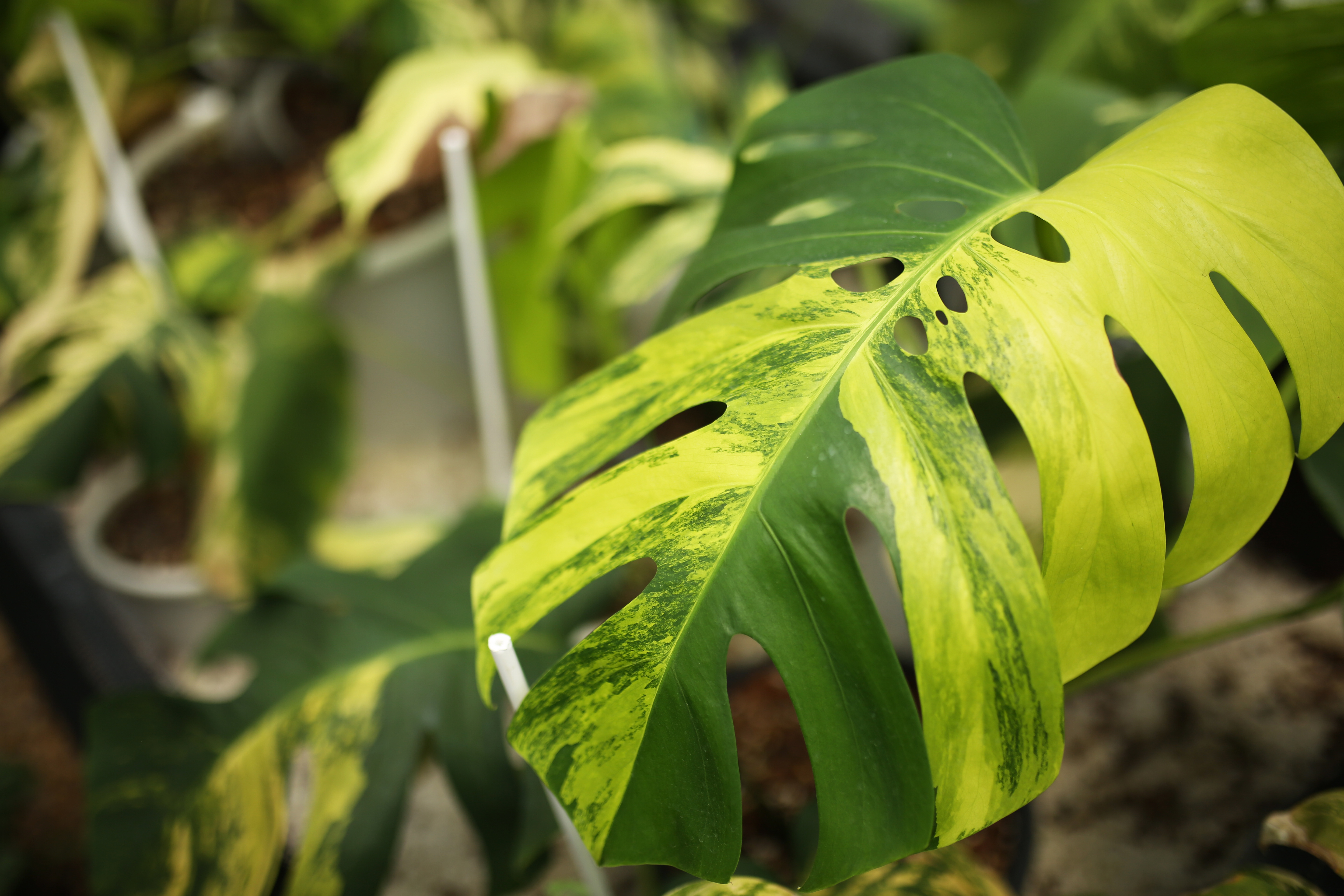The golden Swiss cheese plant
Monstera deliciosa 'Aurea Variegata' is the full scientific name for this yellow and lime variegated form of the Swiss cheese plant. The word Aurea is latin for golden and is here used to describe the unusual yellow variegation of its leaves. The variegation can be spontaneous and it might not spread to the new growth. The new growth can come out fully green as the variegation reverts. To help your plant producing more variegation you can prune it back to above a node with variegation in the stem.
The more variegation found on the stem the less risk of your plant reverting back to producing fully green leaves.
Variegated Swiss cheese plants can only be propagated by using vegetative parts. Seeds will unfortunately most likely turn into fully green plants. Mature Monsteras can be expensive to buy, especially variegated forms, but if you start out small and put the time and care into nurturing them, they will grow fast. Leaves and petioles cannot be used for propagation by themselves. Make sure you have a stem with at least one node to increase the chances of growing a healthy golden Swiss cheese plant.

The Monstera deliciosa (meaning 'delicious monster') is often called Swiss Cheese plant (like the Monstera adansonii) which can be a bit confusing but it's actually an accepted common name for both of them. The 'deliciosa' part comes from the fact that they can bear sweet fruit, although this fruit is toxic when unripened.
These holes in the leaves form through a process called 'fenestration'. The older the plant, the more holes it is likely to have. There are a few different theories as to why these holes develop, and although more research is needed, it is thought that it may be to help light reach the lower leaves as the monstera vines itself around trees in its native tropical environment.
Monsteras are fast-growing, and it's possible to replicate this vining if you provide it with a stake or trellis that it can cling to. Give it a few months and you'll have a beautiful plant display.
In the wild, they can grow up to 65 feet (20 meters) tall!
Care
Swiss Cheese plants like to be kept in bright indirect light - if you think of their natural jungle environment, they're used to being partially shaded under the canopy of taller trees. Therefore, you should avoid placing them in direct sunlight, as this can lead to the leaves becoming burnt.
Swiss Cheese Plants are also really sensitive to any temperatures below 65 F / 18 C. Make sure to protect them if you need to move them.
Additionally, they like to be kept in high humidity conditions, with their soil consistently moist (but not overly wet). If you have a brightly lit bathroom, then this is the ideal place to keep your Monstera! Otherwise, you can replicate this high humidity by, for example, placing it near a humidifier.
Other
Young Swiss Cheese plants can look very different to their mature counterparts - they have small, heart-shaped leaves often with no holes in them at all. As they grow and matures, the leaves become larger and start to form holes.
The strong roots have sometimes been used to create sturdy ropes and baskets.